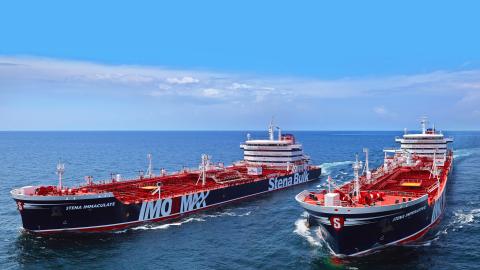View PDF with Figures and Maps
For decades, companies outside the United States have dominated the international commercial shipping and shipbuilding industries. At various times since World War II, Japan, Korea, and certain European countries have been able to leverage their export-driven manufacturing economies and government support to become world leaders in commercial shipbuilding and major players in international shipping. The People’s Republic of China (PRC) has taken that strategy to a new level and now produces more than half the large commercial ships delivered annually, controls scores of seaports in dozens of foreign countries, and owns almost one-fifth of the global commercial fleet.
American commercial shipbuilders and US flag shipping companies have long faced fierce headwinds in international markets and have seen support from the US government dwindle. The US reset its maritime policies in the 1990s when America was the sole superpower and the security benefits of a robust commercial maritime industry were in doubt. By the end of 2022, Americans owned only 3 percent of the 55,000 ships in the global commercial fleet, including just 178 large US flag cargo ships, 85 of which are committed to international trade (see tables 1 and 2 below for a breakdown of US and global commercial fleets).
The emergence of the PRC as a challenger to America’s global leadership has forced sweeping changes in US policy and spending priorities to boost America’s economic and military security. This report recommends that the US reform its policies governing America’s commercial maritime industries because shipping and shipbuilding are core components of national power. These industries remain especially crucial in the twenty-first century, as international trade is more important to a healthy American economy today than ever before. Yet Americans have almost no control over the maritime logistics systems that feed the US economy. The pandemic-induced supply chain crisis showed how much damage can be done when those systems break down.
From a military standpoint, just as the war in Ukraine has demonstrated the continued importance of land-based logistics, meeting extraordinary maritime logistics challenges would be a key to prevailing in a Western Pacific confrontation. The Pentagon has recognized that, in such a conflict, the American fleet of cargo ships should increase to more than twice its current size (to about 200 ships) just to meet the US military’s fuel resupply needs. A baseline fleet of 250 ships is a conservative but more realistic estimate when policymakers consider attrition, uncertainty, and other factors, such as the needs of allied and civilian populations. A larger American commercial fleet would also help deter conflict by expanding the American presence throughout the Western Pacific; providing a response option to quarantine, blockade, and gray-zone tactics by the PRC; and reducing the risk to our peacetime maritime supply chains.
This shortage of sealift capacity is a major gap in America’s ability to deter PRC aggression, and the US government has no clear concept of how to fill it. As the Pentagon has recognized, we cannot rely on foreign ships to meet this need, so American-controlled and ‑crewed ships are essential. Developing (or significantly expanding) a fleet of US Navy cargo ships would be an extremely expensive and inefficient use of taxpayer resources. The best solution by far is to grow the US flag commercial fleet operating in international trade to 250 vessels crewed and controlled by American citizens. These vessels cover most of their costs through revenues from private-sector customers and are therefore orders of magnitude less expensive than organic Navy vessels. They operate daily (not just during exercises) and for generations have proven their value in planning and executing maritime logistics operations in partnership with the Pentagon.
A separate but related gap in deterrence concerns the US shipbuilding industrial base. Improving America’s ability to sustain US forces in a protracted conflict would significantly contribute to deterring PRC aggression. America’s shipbuilding industry currently consists of major defense contractors that build the best combatant ships in the world and a significant number of commercial shipyards that build a wide variety of ships for use in domestic trade. However, decades of right-sizing in pursuit of efficiencies have left these shipbuilders and their suppliers unable to surge production to support wartime demands. Creating spare idle capacity would be costly and is unlikely to enable rapid mobilization. Instead, as the report discusses below, America should expand and diversify its shipbuilding industrial base through a program designed to enable series production of technologically advanced vessels for dual use in international commercial markets and as standby support for use in a military confrontation. This would better position the industry to scale up ship production quickly in the event of conflict.
This report focuses on policy changes that would fill the gaps in our sealift capacity and shipbuilding industrial base in the short to mid-term. There is no magic wand—it is dangerous to think we could achieve these goals by deregulating the US industry or attacking foreign government subsidies. Instead, existing programs that support a US flag fleet in international trade provide an excellent template in that they contract out an essential national security function (providing standby sealift capacity) to the private sector, which can perform it effectively and at a much lower cost to taxpayers than the government could do itself. This report’s basic approach is thus to reform and expand those programs to meet the new threats. This will not only fill the gap in standby sealift capacity but also help deter conflict in other ways, including by reducing risk to our peacetime maritime supply chains.
Policies to achieve these objectives should first address a key threshold issue, which is manpower—having enough highly trained mariners and shipbuilders to meet current and future needs. The American maritime industry is facing the same kinds of challenges that many other employers face in a technologically evolving economy with historically low unemployment. Maritime industry groups and government agencies are proactively working to develop and implement solutions. Those efforts need to be a top priority. Adopting the 250-ship program proposed in this report will help in this regard by giving recruits confidence that a career in the maritime industry can provide long-term employment and growth opportunities.
Congress would need to pass legislation (see chapter V of this report) to consolidate and update the existing programs and grow the fleet from 85 to 250 US flag ships. The updates include reforms that would address the economic viability of the program, mandate innovative procurement procedures that would base participation in the program on providing the best value to the government in a variety of areas, and phase in a requirement that American shipbuilders will eventually build all vessels for the 250-ship US flag fleet. The updates also propose legislation creating a new, limited second US ship registry that would require US citizen control, crewing from US or allied nations, and other standards to be set in the legislation. Ships in the second registry would not close the military sealift gap (since US crews would not be mandatory). However, at minimal cost to taxpayers, they would contribute to US national and economic security in other ways, such as improving supply chain security and deterring gray-zone tactics.
Assuming approval of appropriate legislation in 2024 and implementation of the program beginning in 2025, by the end of this decade, a 250-ship US flag fleet would close the sealift gap; an additional fleet of 250 American second-registry ships would further support US economic and gray-zone security; and US commercial shipbuilders would be producing about 15 technologically advanced, dual-use commercial ships per year.
The cost to taxpayers of implementing this program depends on several factors, including the extent to which Congress adopts other reforms that would incentivize the use of American ships and the effect of competitive procurement procedures. However, even if taxpayers directly fund all the incremental cost of a fivefold expansion of the American international fleet and the construction of 10 to 15 of those ships per year in US shipyards, the new programs when fully implemented would cost between $2 billion and $3 billion more than the current programs. Various “Ship American” mandates or incentives could dramatically reduce that cost. Yet if the options are either to (1) ignore or paper over the current maritime deterrent gaps, (2) have the Navy fill those gaps at an extraordinary cost, or (3) implement a program like the one outlined here—one that leverages enhanced American commercial capacities not only to fill the sealift and shipbuilding gaps but also to support American military and economic security in other ways, and at a fraction of the cost of having the government do it—the choice is clear.
Finally, the report includes a brief discussion of long-term changes that would put the commercial maritime industry in general on a healthier trajectory. These include fundamental reforms of the regulatory system that governs the international shipping industry and possible structural changes to enhance and elevate US government oversight and management of the American commercial maritime industry.
Enacting and implementing the recommendations in this report would reverse decades of policy choices that in hindsight were badly misguided and left us vulnerable. Such changes would set the stage for the resurgence of an American maritime industry that can regain its role as an important instrument of national power and help deter military and economic aggression by our adversaries.
It is scarcely possible to overstate the need for urgent action in this domain (as in many others). As a senior colleague from Hudson Institute explains, “A united and vigilant America can still deter our adversaries from pressing their challenge to a point of no return. New wars that would dwarf the Ukraine conflict, engage Americans in direct combat, and potentially engulf the entire planet in the most destructive conflict ever waged are not, yet, inevitable.”
Past and present sponsors of the American Maritime Security Initiative include Crowley Maritime Corp., Pasha Hawaii, TOTE, and Seacor Holdings (including subsidiaries Waterman Logistics and Seabulk Tankers).















